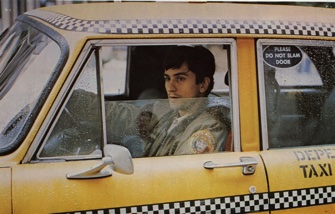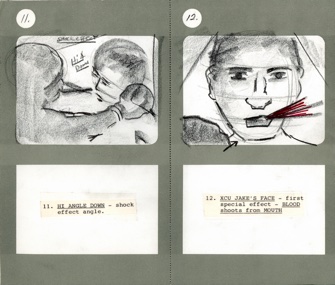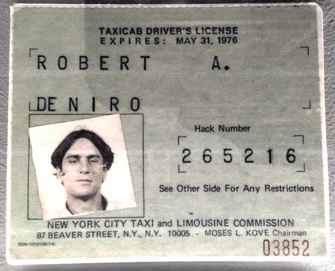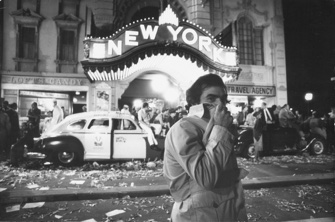
Robert De Niro’s line “You talkin’ to me?” from Martin Scorsese’s Taxi Driver has entered the language as a popular catchphrase. In “Scorsese: The Exhibition” at the Cinémathèque Française, visitors may well have the impression that Scorsese is talking directly to them, so thoroughly are his life and work represented.
This intimate connection with the visitor may also be attributed to the fact that many of the director’s films, especially the early ones, had strong autobiographical components. Not only that, but Scorsese participated actively in the planning of the exhibition and contributed many personal documents and objects. His actual voice is also present throughout the show in documentary footage and recorded interviews. So be prepared for total immersion in his work.
While we visited the show, a friend and I were constantly exclaiming at clips of forgotten scenes in favorite films and wondering why we had never seen others, such as Boxcar Bertha (1972) or the early Who’s That Knocking at My Door? (1968).
My friend, director and screenwriter Audrey O’Reilly, was especially fascinated by the documentation on the making of the films, including Scorsese’s notes and storyboards. The latter are surprisingly crude for such a

great director and all the more charming for it. There is even a highly detailed comic-book-like storyboard for a Roman epic called The Eternal City dating from 1952, when the precocious Scorsese was only 11 years old.
As visitors relive the making of each film from every angle, they come across such gems as the New York City cabbie’s license DeNiro

obtained to prepare for his role in Taxi Driver and a marvelous short film, The Key to Reserva, in which Scorsese “discovers” a few pages from a lost Hitchcock script and films it himself (I won’t say more here, but do watch it through to the end as it is a tour de force of Hitchcockian pastiche).
Another film that should not be missed is the extract from My Voyage to Italy, a documentary narrated by Scorsese in which he tells the story of his Sicilian grandparents’ arrival in Greenwich Village, illustrated by photos of the time and insightful anecdotes about their different personalities, and looks for his roots in Italian locations and cinema. (In Sicily, he learned that the family name was originally “Scozzese,” meaning “Scottish.”)
The exhibition investigates all the themes and obsessions that have influenced Scorsese’s work, from Catholicism, New York City and the

Martin Scorsese during the filming of “New York, New York” (1977)mob to pop music and the relationships between brothers, and between men and women.
Homage is also paid to his dedication to preserving film stock and to other talents who have helped make his films what they are, from editors and composers to the designers of title sequences.
Those who are not Scorsese fans when they enter the exhibition will surely be converted by the time they leave. Luckily for them, the Cinémathèque is also holding a retrospective of all his films.
Favorite
